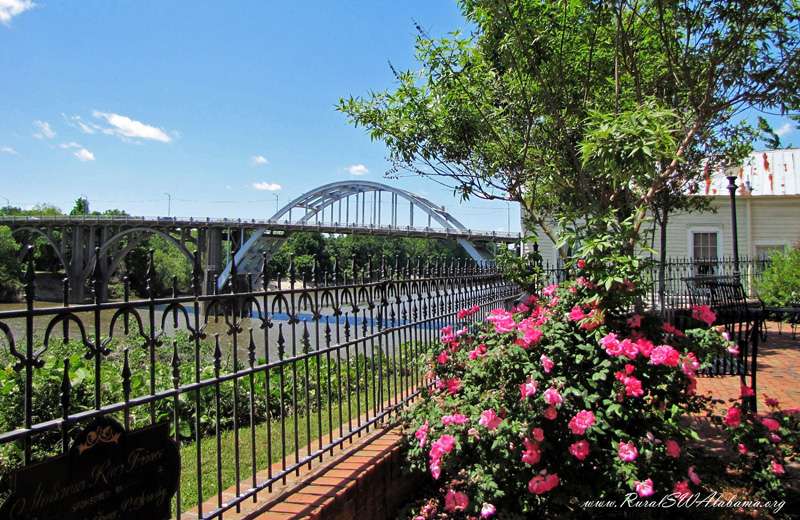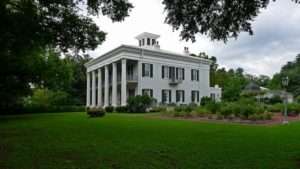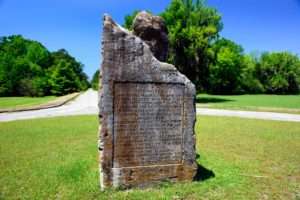The Edmund Pettus Bridge spans over the Alabama River at downtown Selma, AL. It is a steel through-arch bridge that was designed by Henson K. Stephenson and erected in 1939. The bridge was named for Edmund Winston Pettus, a former Confederate Brigadier General and U. S. Senator from Alabama. The Edmund Pettus Bridge was the site of the historic civil rights conflicts known as the Selma to Montgomery Marches and “Bloody Sunday.” The demonstrations that occurred here led to the U.S. Voting Rights Act of 1965. The Edmund Pettus Bridge is a symbol of the civil rights movement. USA Weekend includes the bridge, along with Ellis Island, Jamestown and the Lincoln Memorial, among the “ten historic land- marks that bear proud witness to our nation’s enduring freedoms.
The Edmund Pettus Bridge was added to the National Register of Historic Places on February 27, 2013 and it was declared a National Historic Landmark on March 11, 2013. It is a contributing property to Selma’s Water Avenue Historic District that’s listed on the National Register of Historic Places. The Edmund Pettus Bridge is also part of The Selma to Montgomery National Historic Trail that’s administered by the National Park Service (NPS).





